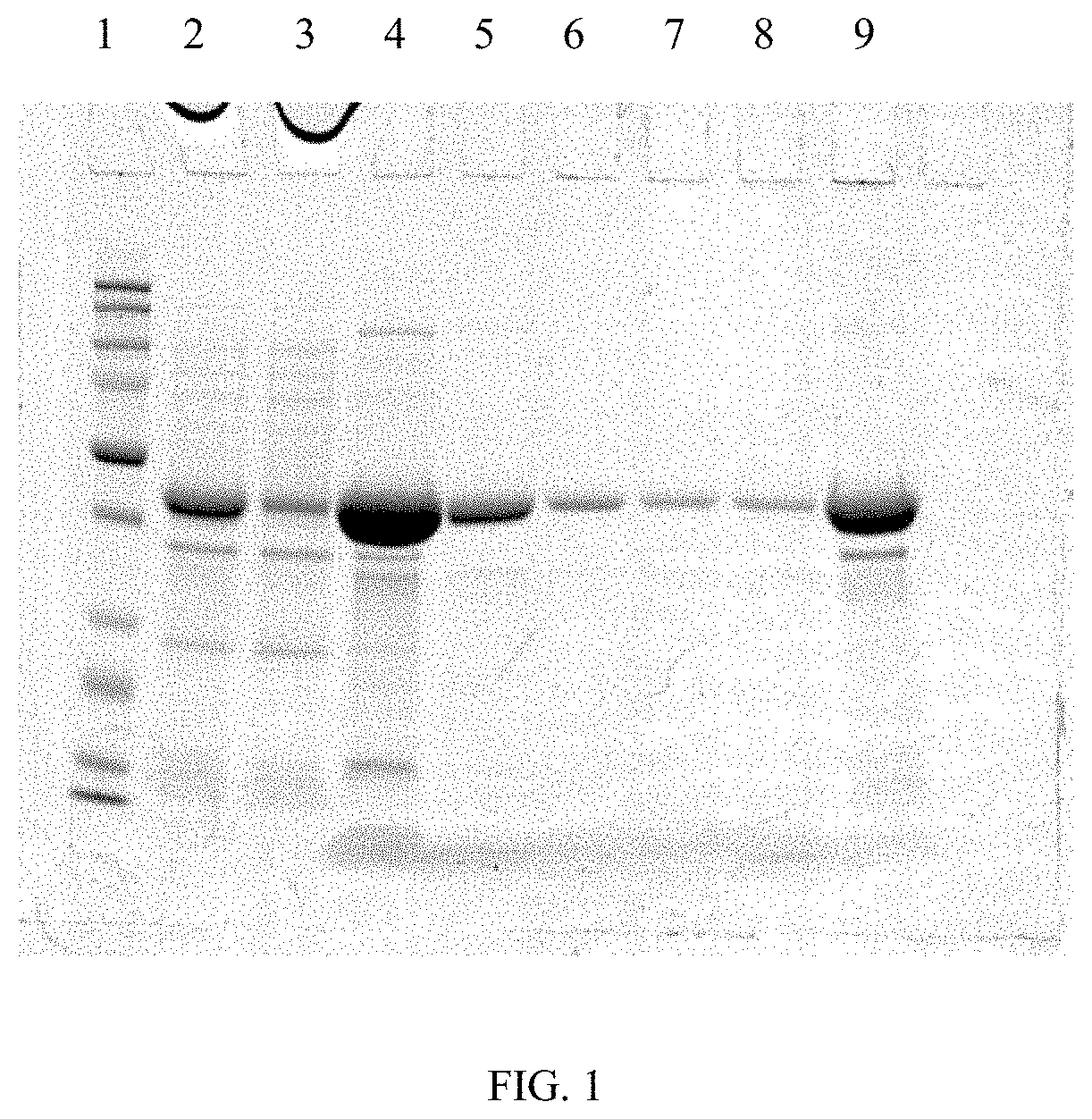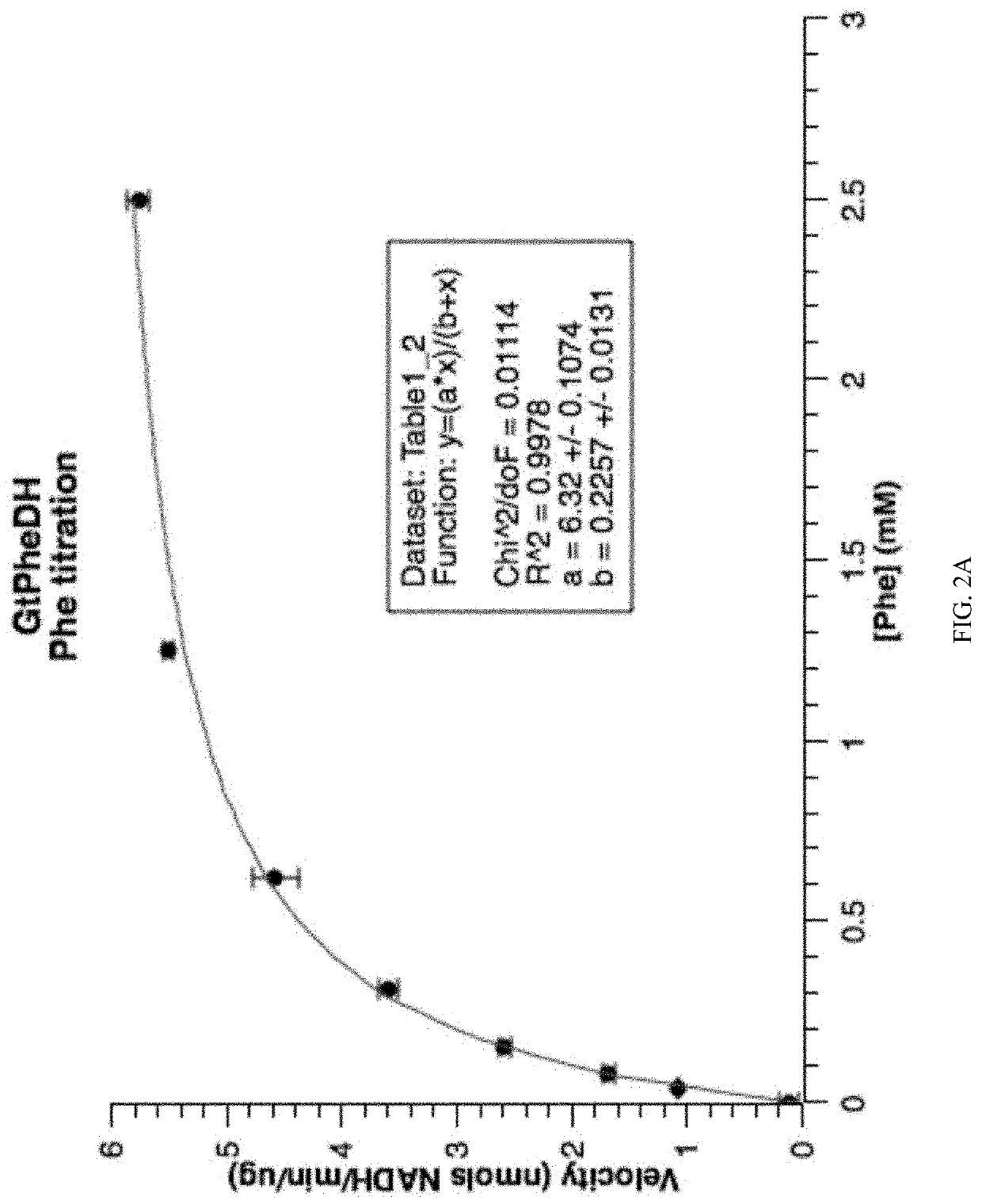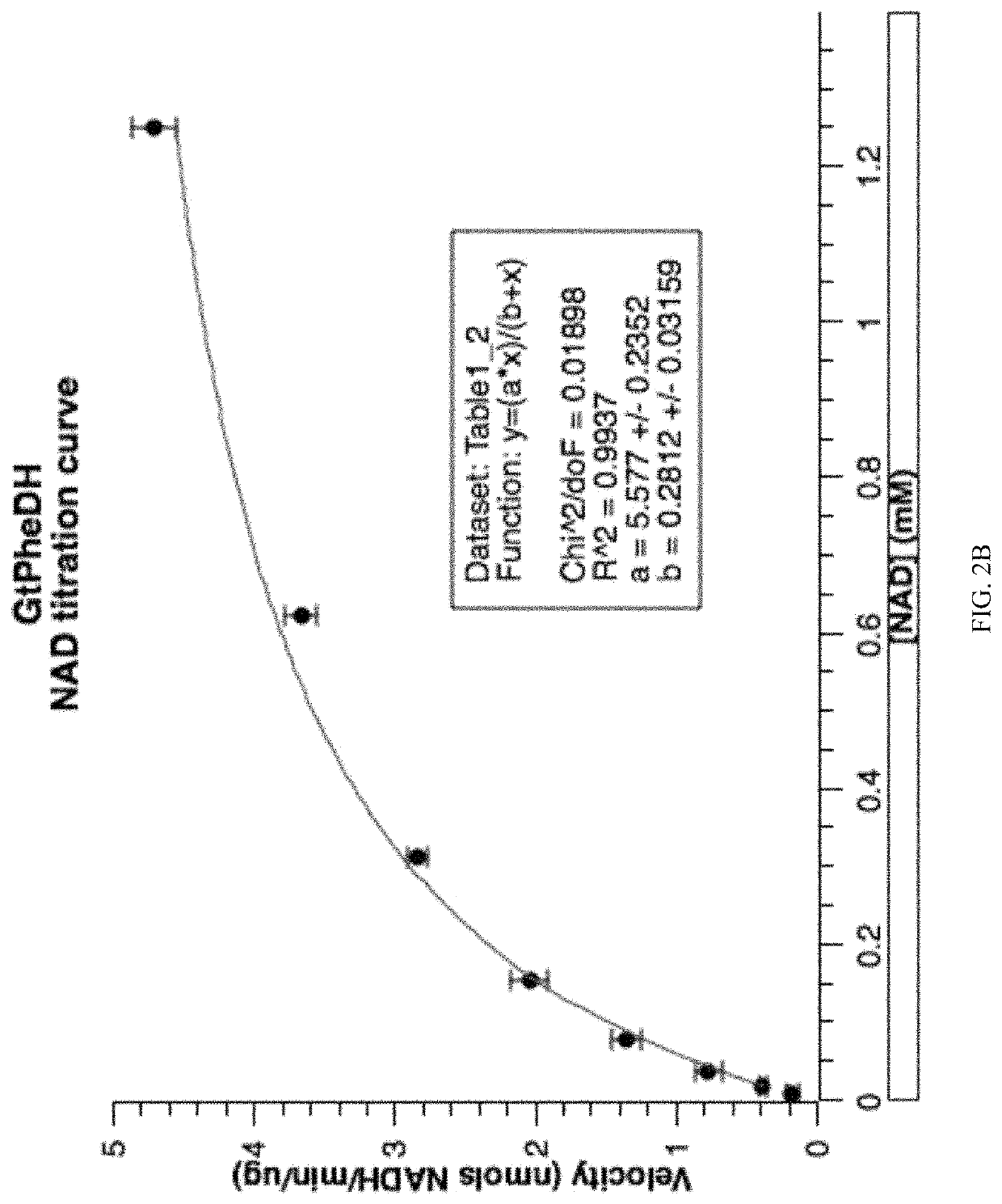Methods and compositions for treating phenylketonuria
a technology of phenylketonuria and composition, applied in the field of methods and compositions for treating phenylketonuria, can solve the problems of limited efficacy of alternative pku therapies, significant decrease in quality of life, and inability to meet the needs of dietary nutrient requirements, etc., and achieve the effect of reducing phenylalanine levels
- Summary
- Abstract
- Description
- Claims
- Application Information
AI Technical Summary
Benefits of technology
Problems solved by technology
Method used
Image
Examples
example 1
Expression, and Purification of GtPheDH
[0097]Materials and Methods
[0098]Cloning
[0099]DNA from Geobacillus thermoglucosidasius was isolated and the PheDH gene was amplified by PCR using the following primers:
[0100]
Forward: (SEQ ID NO: 4)5′-TGTGCTAGCATGAATACCGTTACCAATCAGTGGAAAGC-3′; Reverse:(SEQ ID NO: 5)5′-CTCGAGTCATTACCGGCGGATATCCCACTTCG-3′.
[0101]The forward primer introduces a NheI restriction site and the reverse primer introduces two extra STOP codons along with a XhoI restriction site. Amplification product size was determined by agarose gel electrophoresis. PCR product was purified directly from the PCR reaction mixture using the QIAquick® Gel Extraction kit (Qiagen) and subsequently used for subcloning into pCR-BluntII TOPO® vector using the Zero Blunt® PCR cloning kit (Invitrogen). Subcloning reaction was used to transform One Shot® TOP10 chemically competent cells (Invitrogen) and positive colonies were selected by resistance to the antibiotic kanamycin.
[0102]The plasmids pr...
example 2
ization of Recombinant GtPheDH
[0118]Materials and Methods
[0119]Enzymatic Assay
[0120]GtPheDH activity was tested for activity in the presence of different concentrations of assay buffer at pH 10.4: 200, 100, and 25 mM Gly / KOH / KCl. The absorbance at 340 nm was measured at different times—5, 10, and 15 minutes after the reaction started—which showed optimal activity at 200 mM Gly / KOOH / KCl (FIG. 9). Thus, assays to measure GtPheDH activity were performed in 200 mM Glycine / KOH / KCl buffer, pH 10.4, containing 0.5 mM phenylalanine and 1 mM NAD. The amount of purified enzyme per 100 μl of assay volume was 1.4 μg. Activity was determined spectrophotometrically by monitoring the production of NADH at 340 nm on a xMark™ spectrophotometer (Bio-Rad).
[0121]Additionally, for some experiments, phenylalanine consumption was determined by amino acid analysis using a Hitachi L-8800 amino acid analyzer. Samples were prepared for amino acid analysis as follows:[0122]Add 50 μl of sample to 100 μl of amin...
example 3
of Phe Concentration in the Intestine in a Wild-Type Mouse Model
[0152]Mice Housing
[0153]Wild-type C57BL / 6 mice were obtained from Children's National Medical Center (CNMC), and housed in the animal facility at CNMC.
[0154]Luminal Content Extraction
[0155]Wild-type C57BL / 6 mice were sacrificed by CO2 inhalation and death was ensured by cervical dislocation. Intestinal tract was harvested from the stomach to the rectum and placed on a paper towel as shown in FIG. 5A. The intestinal tract was sectioned in 7 portions as shown in FIG. 5A and the contents of each section were flushed with 500 μl of H2O. Each section-flushed content was incubated rotating at room temperature for 30 minutes and the soluble materials were separated from the solids by centrifugation. The pH of each section was measured using the soluble fraction of each sample by pH paper as shown at the bottom of FIG. 5B (yellow: acid, blue: basic).
[0156]Phenylalanine content in each section was measured by amino acid analyzer...
PUM
| Property | Measurement | Unit |
|---|---|---|
| w/w | aaaaa | aaaaa |
| volume | aaaaa | aaaaa |
| concentration | aaaaa | aaaaa |
Abstract
Description
Claims
Application Information
 Login to View More
Login to View More - R&D
- Intellectual Property
- Life Sciences
- Materials
- Tech Scout
- Unparalleled Data Quality
- Higher Quality Content
- 60% Fewer Hallucinations
Browse by: Latest US Patents, China's latest patents, Technical Efficacy Thesaurus, Application Domain, Technology Topic, Popular Technical Reports.
© 2025 PatSnap. All rights reserved.Legal|Privacy policy|Modern Slavery Act Transparency Statement|Sitemap|About US| Contact US: help@patsnap.com



